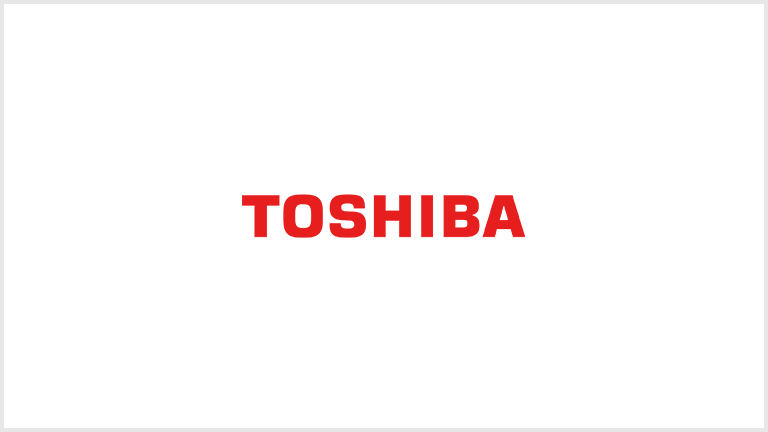Introduction
Toshiba is a manufacturer and marketer of electrical and electronic products, including personal computers, electronic devices, medical equipment and home appliances. Toshiba’s Business Model involves its business plan, revenue model, its competitors, SWOT Analysis and many more.
Today Toshiba is one of the world’s largest and most recognized electronics brands. It has subsidiaries and manufacturing facilities across the world and boasts a market capitalization of approximately JPY 1.13 trillion ($10.17 billion).
Revenue Model
Toshiba generates revenue through the manufacture and sale of electric and electronic products. The Company’s revenue is divided into five principal segments: Energy and Infrastructure, Community Solutions, Healthcare Systems and Devices, Electronic Devices and Components, and Lifestyle Products and Services.
Electronic Devices and Components accounted for 24%, Community Solutions accounted for 19%, Lifestyle Products accounted for 16% and Healthcare Systems and Services accounted for 6%. The remaining 7% was attributed to other products and services that do not fit into one of the Company’s product segments, such as cloud and network solutions.
Competitors
There are several brands in the market which are competing for the same set of customers. Below are the top 3 competitors of Toshiba:
1. Hitachi
2. Fujitsu
3. NEC corporation
SWOT Analysis
The Toshiba is one of the leading companies in its industry. Toshiba maintains its prominent position in market by critically analyzing and reviewing the SWOT analysis. SWOT analysis a highly interactive process and requires effective coordination among various departments within the organization such as – marketing, finance, operations, management information systems and strategic planning.
Strengths
- Highly skilled workforce through successful training and learning programs. Toshiba is investing huge resources in training and development of its employees resulting in a workforce that is not only highly skilled but also motivated to achieve more.
- Automation of activities brought consistency of quality to Toshiba products and has enabled the company to scale up and scale down based on the demand conditions in the market.
- Good Returns on Capital Expenditure – Toshiba is relatively successful at execution of new projects and generated good returns on capital expenditure by building new revenue streams.
- Strong Brand Portfolio – Over the years Toshiba has invested in building a strong brand portfolio. The SWOT analysis of Toshiba just underlines this fact. This brand portfolio can be extremely useful if the organization wants to expand into new product categories.
- Superb Performance in New Markets – Toshiba has built expertise at entering new markets and making success of them. The expansion has helped the organization to build new revenue stream and diversify the economic cycle risk in the markets it operates in.
- Strong dealer community – It has built a culture among distributor & dealers where the dealers not only promote company’s products but also invest in training the sales team to explain to the customer how he/she can extract the maximum benefits out of the products.
Weaknesses
- Need more investment in new technologies. Given the scale of expansion and different geographies the company is planning to expand into, Toshiba needs to put more money in technology to integrate the processes across the board. Right now the investment in technologies is not at par with the vision of the company.
- The marketing of the products left a lot to be desired. Even though the product is a success in terms of sale but its positioning and unique selling proposition is not clearly defined which can lead to the attacks in this segment from the competitors.
- Not highly successful at integrating firms with different work culture. As mentioned earlier even though Toshiba is successful at integrating small companies it has its share of failure to merge firms that have different work culture.
- Financial planning is not done properly and efficiently. The current asset ratio and liquid asset ratios suggest that the company can use the cash more efficiently than what it is doing at present.
- The profitability ratio and Net Contribution % of Toshiba are below the industry average.
Opportunities
- New customers from online channel – Over the past few years the company has invested vast sum of money into the online platform. This investment has opened new sales channel for Toshiba. In the next few years the company can leverage this opportunity by knowing its customer better and serving their needs using big data analytics.
- Decreasing cost of transportation because of lower shipping prices can also bring down the cost of Toshiba’s products thus providing an opportunity to the company – either to boost its profitability or pass on the benefits to the customers to gain market share.
- Opening up of new markets because of government agreement – the adoption of new technology standard and government free trade agreement has provided Toshiba an opportunity to enter a new emerging market.
- Lower inflation rate – The low inflation rate bring more stability in the market, enable credit at lower interest rate to the customers of Toshiba.
- Organization’s core competencies can be a success in similar other products field. A comparative example could be – GE healthcare research helped it in developing better Oil drilling machines.
- The market development will lead to dilution of competitor’s advantage and enable Toshiba to increase its competitiveness compare to the other competitors.
- New environmental policies – The new opportunities will create a level playing field for all the players in the industry. It represent a great opportunity for Toshiba to drive home its advantage in new technology and gain market share in the new product category.
Threats
- As the company is operating in numerous countries it is exposed to currency fluctuations especially given the volatile political climate in number of markets across the world.
- Changing consumer buying behavior from online channel could be a threat to the existing physical infrastructure driven supply chain model.
- Growing strengths of local distributors also presents a threat in some markets as the competition is paying higher margins to the local distributors.
- Intense competition – Stable profitability has increased the number of players in the industry over last two years which has put downward pressure on not only profitability but also on overall sales.
- Rising pay level especially movements such as $15 an hour and increasing prices in the China can lead to serious pressure on profitability of Toshiba
- Imitation of the counterfeit and low quality product is also a threat to Toshiba’s product especially in the emerging markets and low income markets.
Conclusion
Toshiba can expand its innovations in other areas of consumer electronics, such as home appliances, where being innovative pays off in terms of increased demand for a company’s products. Working closely with clients allows the company to understand market demand and end-user consumer preferences. Maintaining low manufacturing and R&D costs will ensure Toshiba’s survival and ability to fund its innovations for long-term competitive capabilities.




